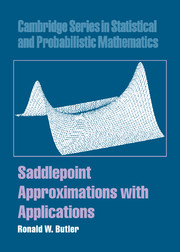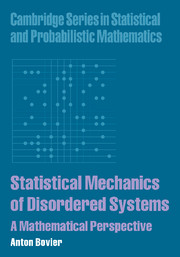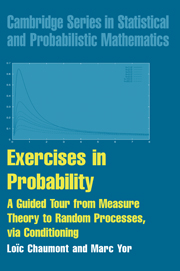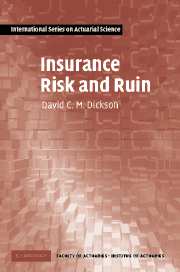Refine search
Actions for selected content:
2703 results in General statistics and probability
Preface
-
- Book:
- Brownian Motion
- Published online:
- 05 June 2012
- Print publication:
- 25 March 2010, pp viii-ix
-
- Chapter
- Export citation
2 - Brownian motion as a strong Markov process
-
- Book:
- Brownian Motion
- Published online:
- 05 June 2012
- Print publication:
- 25 March 2010, pp 36-64
-
- Chapter
- Export citation
Frontmatter
-
- Book:
- Brownian Motion
- Published online:
- 05 June 2012
- Print publication:
- 25 March 2010, pp i-iv
-
- Chapter
- Export citation
Appendix B - Background and prerequisites
-
- Book:
- Brownian Motion
- Published online:
- 05 June 2012
- Print publication:
- 25 March 2010, pp 346-360
-
- Chapter
- Export citation
Frequently used notation
-
- Book:
- Brownian Motion
- Published online:
- 05 June 2012
- Print publication:
- 25 March 2010, pp x-xii
-
- Chapter
- Export citation
Selected open problems
-
- Book:
- Brownian Motion
- Published online:
- 05 June 2012
- Print publication:
- 25 March 2010, pp 383-385
-
- Chapter
- Export citation

Saddlepoint Approximations with Applications
-
- Published online:
- 25 February 2010
- Print publication:
- 16 August 2007

Statistical Analysis of Stochastic Processes in Time
-
- Published online:
- 03 February 2010
- Print publication:
- 02 August 2004

Survival Analysis for Epidemiologic and Medical Research
-
- Published online:
- 03 February 2010
- Print publication:
- 03 March 2008

Statistical Mechanics of Disordered Systems
- A Mathematical Perspective
-
- Published online:
- 25 January 2010
- Print publication:
- 08 June 2006

Exercises in Probability
- A Guided Tour from Measure Theory to Random Processes, via Conditioning
-
- Published online:
- 19 January 2010
- Print publication:
- 03 November 2003

Insurance Risk and Ruin
-
- Published online:
- 19 January 2010
- Print publication:
- 10 January 2005

A Handbook of Numerical and Statistical Techniques
- With Examples Mainly from the Life Sciences
-
- Published online:
- 18 December 2009
- Print publication:
- 09 June 1977

Random Networks for Communication
- From Statistical Physics to Information Systems
-
- Published online:
- 12 December 2009
- Print publication:
- 10 January 2008

Secondary Data Sources for Public Health
- A Practical Guide
-
- Published online:
- 03 December 2009
- Print publication:
- 09 April 2007
14 - Survival Models
-
- Book:
- Regression Modeling with Actuarial and Financial Applications
- Published online:
- 05 June 2012
- Print publication:
- 30 November 2009, pp 383-398
-
- Chapter
- Export citation
Part IV - Actuarial Applications
-
- Book:
- Regression Modeling with Actuarial and Financial Applications
- Published online:
- 05 June 2012
- Print publication:
- 30 November 2009, pp 415-416
-
- Chapter
- Export citation
15 - Miscellaneous Regression Topics
-
- Book:
- Regression Modeling with Actuarial and Financial Applications
- Published online:
- 05 June 2012
- Print publication:
- 30 November 2009, pp 399-414
-
- Chapter
- Export citation
4 - Multiple Linear Regression – II
-
- Book:
- Regression Modeling with Actuarial and Financial Applications
- Published online:
- 05 June 2012
- Print publication:
- 30 November 2009, pp 107-147
-
- Chapter
- Export citation
16 - Frequency-Severity Models
-
- Book:
- Regression Modeling with Actuarial and Financial Applications
- Published online:
- 05 June 2012
- Print publication:
- 30 November 2009, pp 417-432
-
- Chapter
- Export citation
